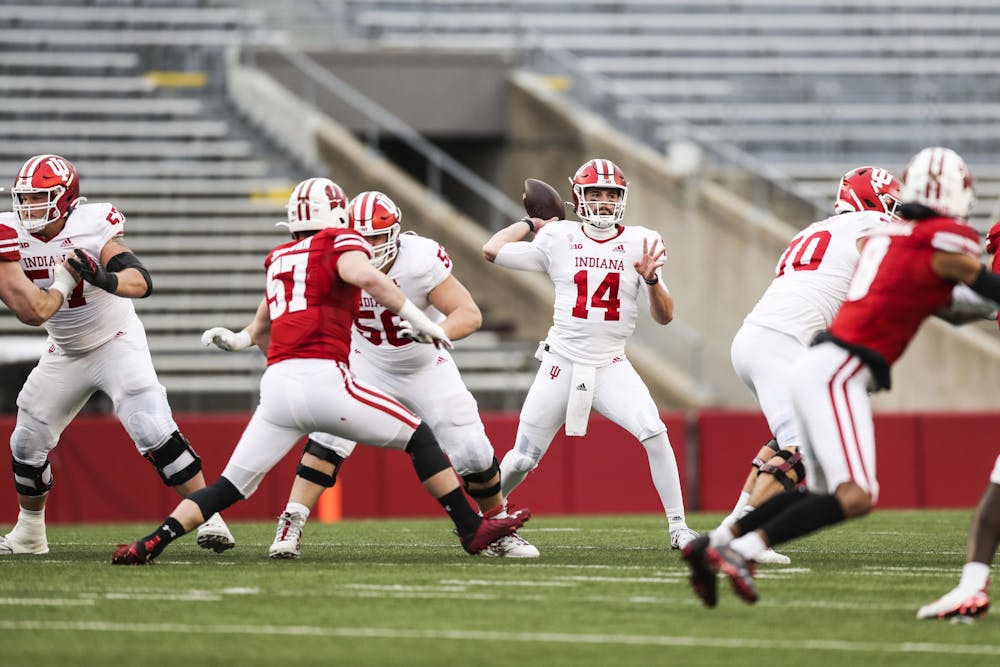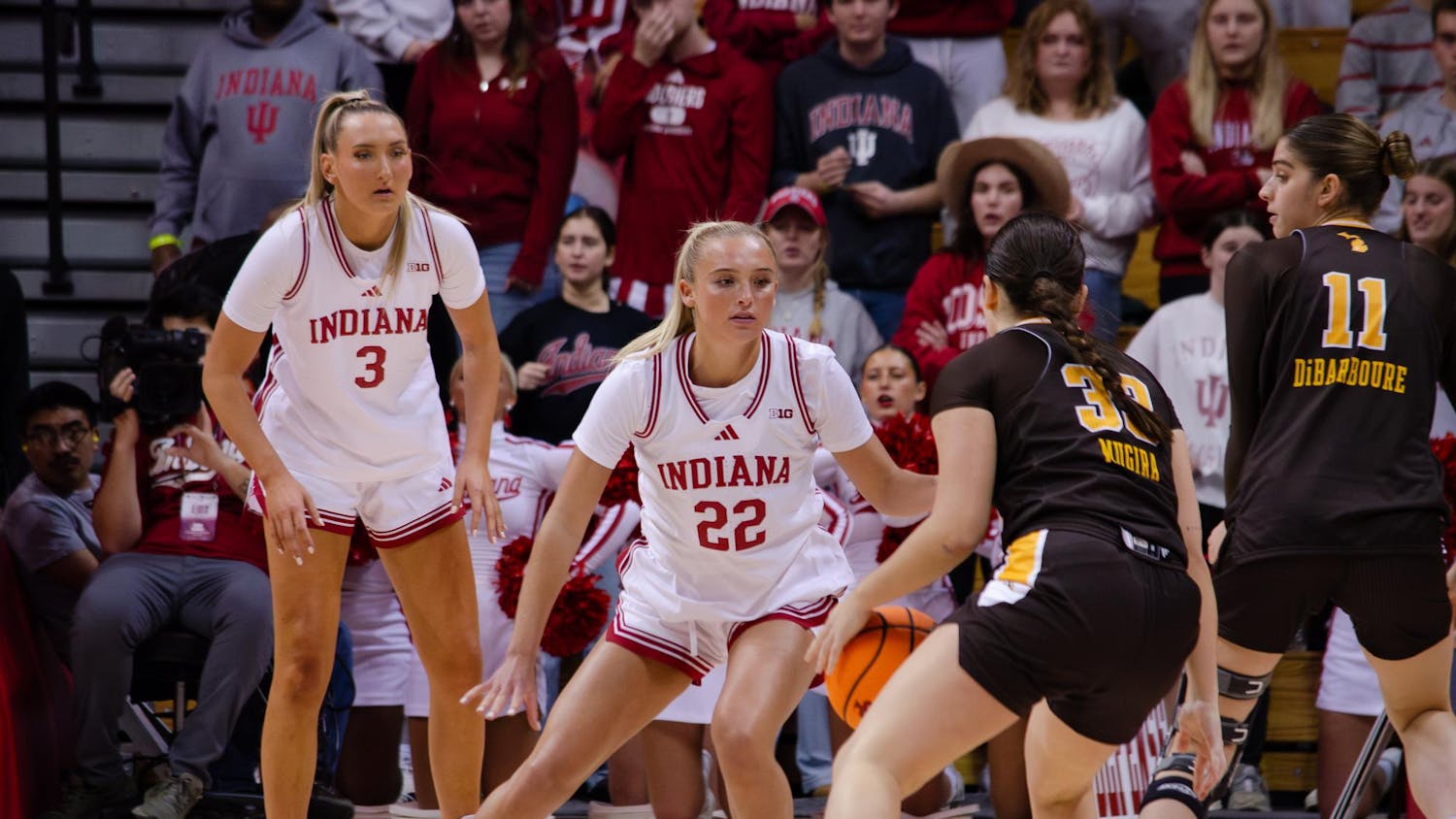Indiana football junior quarterback Michael Penix Jr. is week to week with an acromioclavicular joint separation in his throwing shoulder. This means junior Jack Tuttle will start in relief.
Here’s how Indiana’s offense may change with Tuttle, and how he differs from Penix.
Expect less explosive plays
Indiana’s offense has been lacking in deep, explosive passing this season relative to last year. Offensive coordinator Nick Sheridan made note of Indiana’s lack of a vertical passing game in a Sept. 13 press conference.
“That’s an area that we need to improve on,” Sheridan said. “We have shown with this group over the last few years that they’re capable of doing it.”
Related: Indiana football evaluates offense after quarterback Penix’s injury
Penix’s attempts of 20 or more yards beyond the line of scrimmage have dropped to 12.9% this season from 18.2% of his attempts being in that area of the field last season.
The offense had a similar drop in 2020 when Tuttle, who only threw 15.3% of his passes downfield, came in for Penix after he tore his ACL against Maryland.
On top of that, Indiana saw less success from Tuttle’s deep attempts in 2020. Tuttle completed 9.1% of those attempts, compared to Penix’s 42.5%. Penix has regressed in deep attempt success rate this season, only completing 19% of those attempts.
As for big time throws — which Pro Football Focus defines as passes with excellent ball placement and timing usually thrown deep downfield into a tight window — Penix has outpaced Tuttle both in 2020 and this season.
Penix had 24 big time throws in 2020, good for 10.3% of his overall attempts. This season, he’s had seven — 4.1% of his overall attempts.
Tuttle had one big time throw in 2020, only 1.2% of his overall attempts.
Indiana has tried to create explosive plays this season with a quarterback who has a good track record of making them happen but has had mixed results. Now it may have to do so with a quarterback with just three deep completions across his entire college career.
More play action
Indiana upped its usage of play-action passing concepts when Tuttle started in relief of Penix in 2020.
With Penix, Indiana only called play action on 19.9% of passing dropbacks. That number jumped to 37.7% with Tuttle.
Tuttle also had much more success with play action. Penix completed 48.9% of his play-action attempts for 303 yards and four touchdowns. Tuttle completed 78.6% for 170 yards and a touchdown.
Of Penix’s 1,645 passing yards in 2020, 18.4% came off of play action. Of Tuttle’s 358 passing yards in 2020, 47.5% came off of play action.
Related: Indiana football running back David Ellis out for season after ankle surgery
Indiana upped its usage of play action for Penix this season to 27.6%, but his completion percentage on those plays only rose to 55.6%.
In the limited sample size of Tuttle’s performance this season, 23.8% of his attempts have been play-action passes. He’s completed four of those five attempts for 73 of his 168 total passing yards.
If Tuttle is the starter for the foreseeable future, Indiana would be wise to make more use of play-action concepts to maximize his efficiency.




